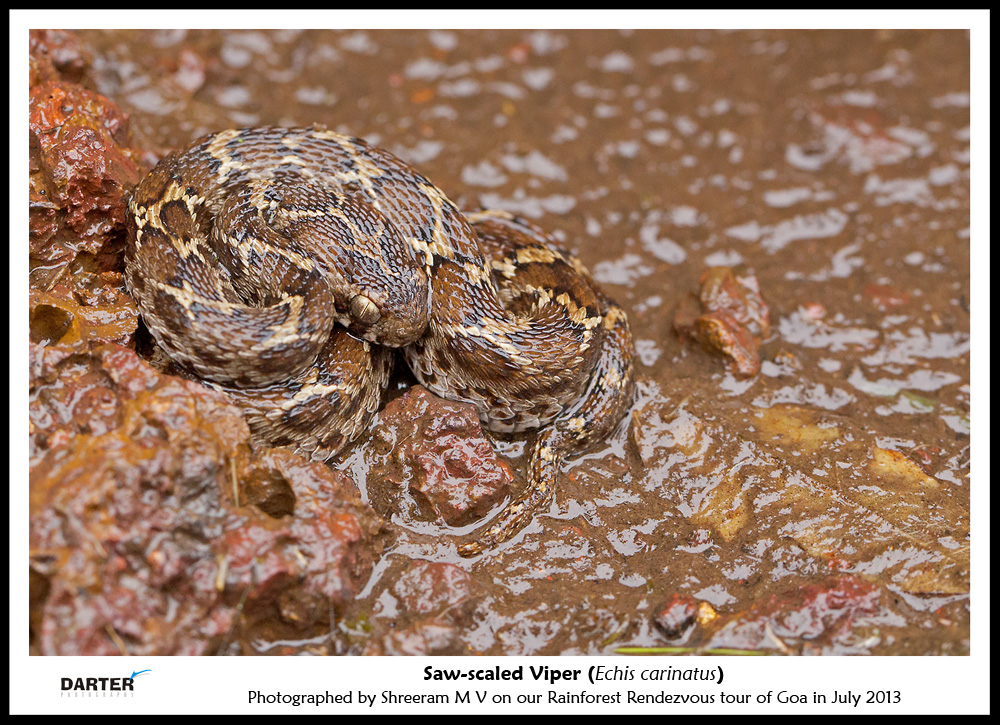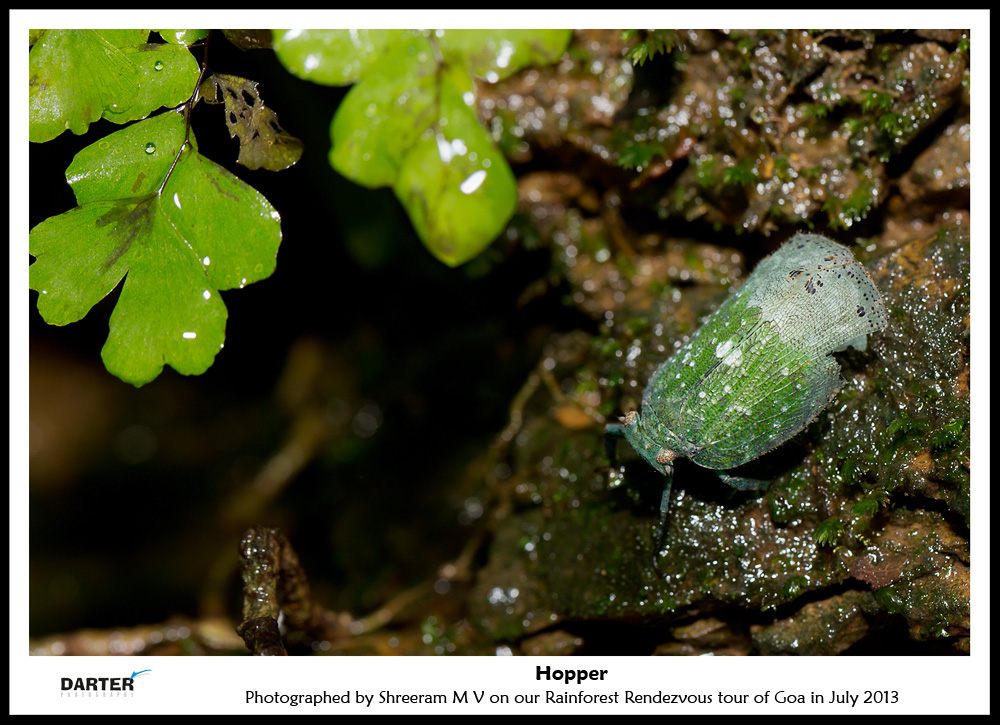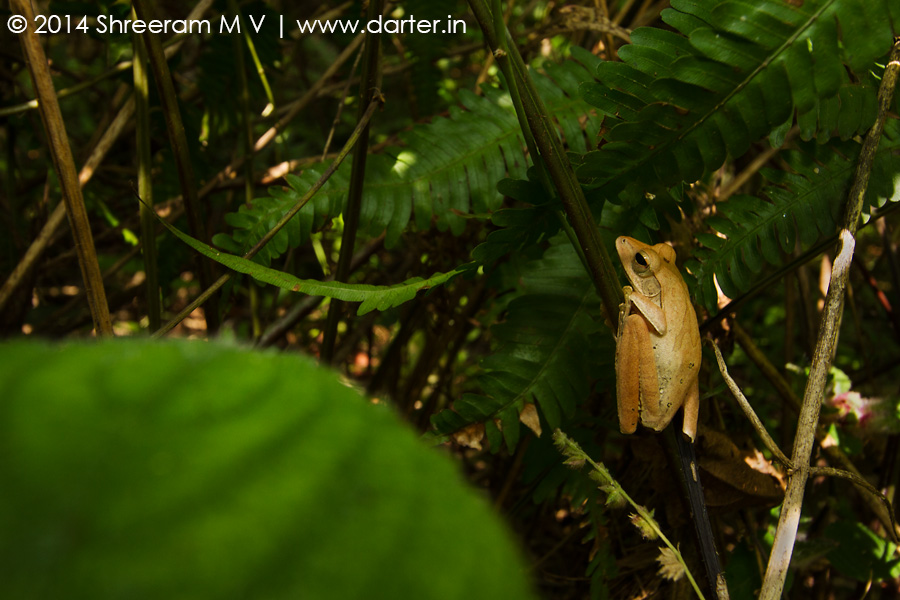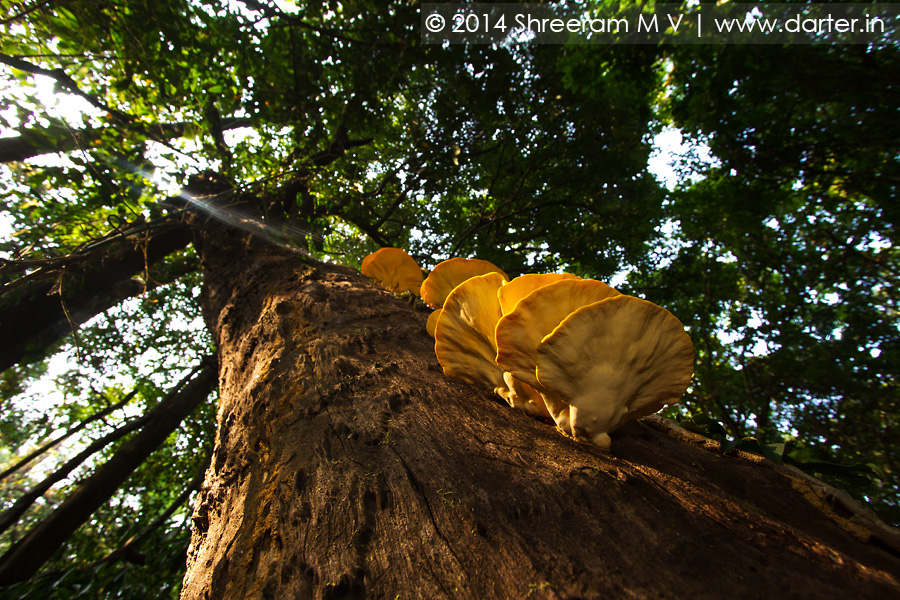When I show this photograph to my friends, they often pose this question to me – “How far were you from the snake?” There is a deep sense of concern in their question (in most cases). The snake in the photograph is a Saw-scaled Viper (Echis carinatus) – one of India’s Big 4 venomous snakes. The answer in cases like this is – I was very very cautious and out of striking distance from the snake. The snake has venom that is potentially lethal for human beings. It is of utmost importance that sufficient distance has to be maintained so as to not provoke the snake (and be safe).
But there are many cases where the subject is not harmful. Like this Hopper. Does that mean that the photographer need not worry about the distance?
The answer to the question is obviously (and resoundingly)- NO. Most animals are disturbed when we approach them too close. All of us want our space; so do the animals. When the photographer gets too close, more often than not the natural behaviour of the animal is altered. It might be stressed out or choose to exit the scene altogether. The photography opportunity evaporates.
The photographer can also harm the animal especially when an external flash is used to light up the animal. Flash can be extremely disturbing to the animal and when it is fired from a close distance, it might end up blinding the animal temporarily. Not a good thing at all to do! (In this case, the flash was held off camera and fired only two times on the frog.)
A technical point here. Your camera lens can only allow you a certain distance from the animal. This is known as the Minimum Focusing Distance. For example, a 100mm macro typically allows you 30cm from the subject. Any closer and you’ll find that the camera is unable to focus. The minimum focusing distance is often mentioned on the lens. If not, you’ll find it in the lens manual or the specifications of the lens.
So, the rainforest photographer must consider 4 broad ethical principles when he/she approaches the animal:
- No disturbance to animal – The animal is more important than the photograph.
- No harm to animal – Keep your flash under control.
- No harm to the photographer – Exercise caution when the animal is potentially dangerous to the photographer.
- Be aware of camera limitations – Your lens can only focus beyond the minimum focusing distance (refer to your lens or lens manual for details)
Of course, care must also be exercised when approaching the animal. Slow, steady movements are advised with the camera already pointed at the animal. And, equally important, the retreat has to be cautious too. Many a time, if the animal exits the scene, you’ll have to face your photography colleagues who were awaiting their turn.
There are many other organisms in the rainforest that allow you a much closer approach – like these fungi. Experiment with your photography on subjects such as these. And take care not to harm them in any way.
Remember this – A good wildlife photograph is not just about technique, lighting and composition. It is, more importantly, about leaving the subject undisturbed.
Just in case you were wondering, the photograph of the Saw-scaled Viper was taken from a distance of 2 feet from the snake. Care was taken to approach the snake carefully and, equally importantly, to retreat carefully to minimize disturbance.





